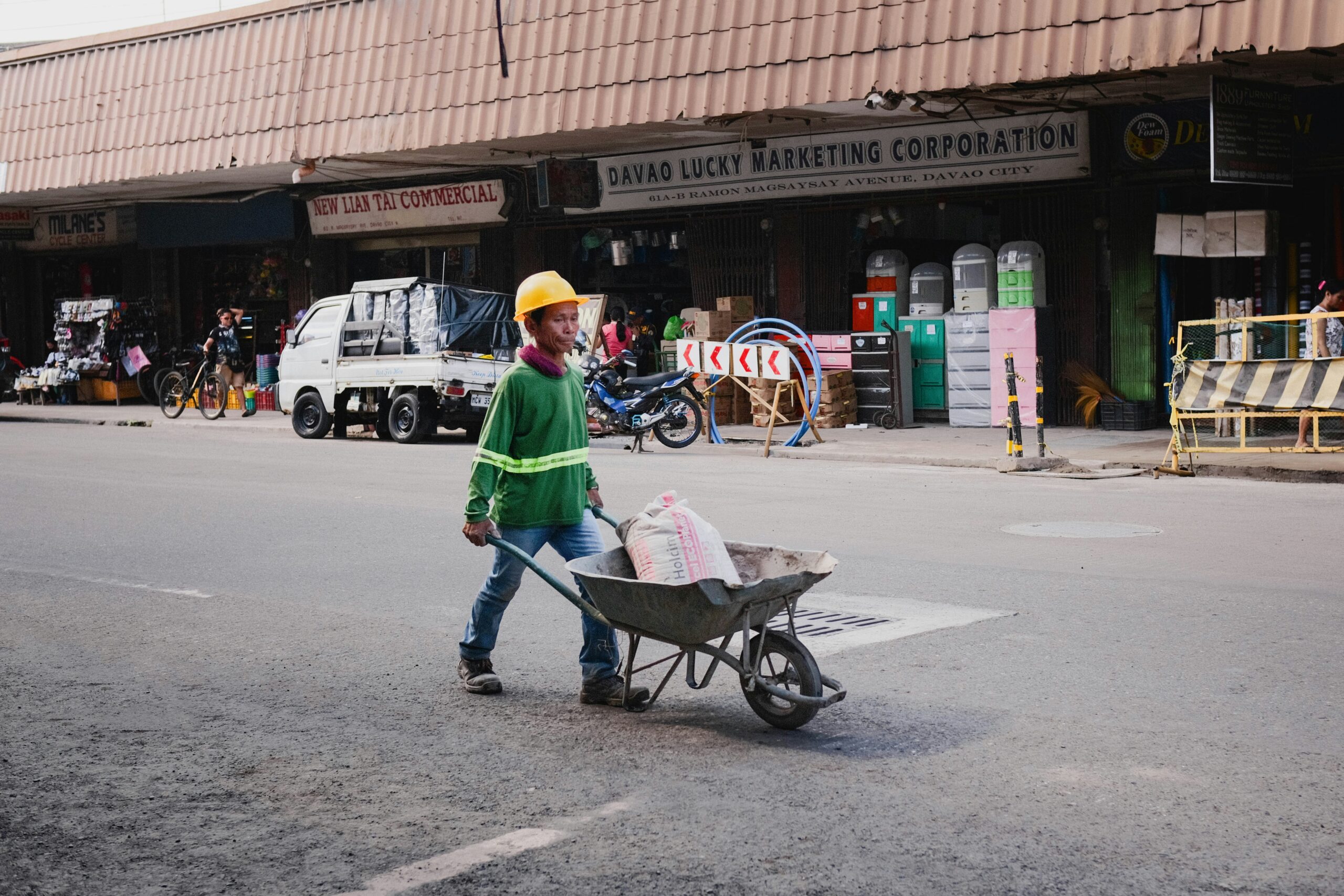Introduction to Pushpak Express
The Pushpak Express is an esteemed train service that has established itself as a significant player in the Indian railway network. This express train, operational since the early 1990s, primarily runs between major cities, facilitating efficient and convenient travel for thousands of commuters. One of the noteworthy aspects of the Pushpak Express is its dual role as both a passenger and a vital economic link, connecting key urban centers and thus contributing to regional development.
Covering major routes, the Pushpak Express connects cities such as Pune, Mumbai, Hyderabad, and various smaller towns, thereby promoting not just tourism but also business relationships. The train’s extensive network plays a crucial role in enhancing the accessibility of these urban areas, making it a preferred mode of transportation for daily commuters, as well as occasional travelers. The popularity of the Pushpak Express can be attributed to its punctual services, comfortable amenities, and the availability of multiple classes to cater to different segments of the population.
Additionally, the Pushpak Express is recognized for its significance in terms of reducing travel time between destinations. It plays an essential role in alleviating road congestion by offering a reliable alternative for long-distance travel. As a testament to its importance, the train has frequently been commended for its efficiency and customer satisfaction, making it a reliable choice for those navigating India’s busy transportation landscape. This service continues to thrive, adapting to the evolving needs of passengers while upholding its tradition of excellence in rail travel across the nation.
The Recent Pushpak Express Accident
On the morning of October 15, 2023, a tragic incident occurred involving the Pushpak Express, a prominent train service operating in India. The accident transpired near the outskirts of Bhopal, Madhya Pradesh, where the train was reportedly en route from Varanasi to Mumbai. At approximately 8:45 AM, the locomotive collided with a freight train that was mistakenly on the same track, leading to significant chaos and confusion among passengers.
The immediate aftermath of the collision was marked by panic and distress. Eyewitness accounts described scenes of uncertainty, with many passengers thrown from their seats due to the impact. Emergency services responded promptly, initiating rescue operations to assist those injured and to secure the area. Initial reports state that around fifty individuals sustained injuries, some of which were critical, necessitating urgent medical attention. Local hospitals have been placed on high alert to handle the influx of casualties.
Moreover, the incident caused substantial disruption to train services in the region. Multiple trains were delayed or diverted as recovery operations commenced, affecting thousands of commuters dependent on these services for their daily travels. As investigations unfolded, authorities began to gather testimonies from passengers, aiming to piece together a comprehensive account of the accident’s circumstances.
Preliminary investigations indicated potential negligence concerning track management and oversight. This has prompted the Ministry of Railways to launch a formal inquiry, emphasizing the need for thorough scrutiny into operational protocols to prevent similar accidents in the future. As the inquiry progresses, the safety of rail travel remains a paramount concern, particularly in light of this shocking incident involving the Pushpak Express.
Casualties and Injuries: An Overview
The recent accident involving the Pushpak Express has led to a tragic loss of life and numerous injuries, casting a shadow over the local community. Reports indicate that the accident resulted in a significant number of casualties, marking it as one of the more severe rail incidents in recent history. Initial figures suggest that at least twenty people lost their lives as a direct result of the crash, while hundreds more sustained various degrees of injuries, ranging from minor to critical.
Emergency response units were swiftly deployed to the scene of the accident, including local police, paramedics, and search and rescue teams, who worked diligently to provide assistance to the injured and to recover victims. Eyewitness accounts paint a harrowing picture of chaos and confusion as rescue efforts commenced. Many of those injured described the overwhelming fear and uncertainty in the moments following the accident. Hospitals in the vicinity reported an influx of patients, necessitating the mobilization of additional medical resources, including surgeons and specialists, to handle the situation effectively.
Local authorities have expressed their deep condolences to the families of the victims and injured individuals, committing to support them during this difficult time. In addition, healthcare services have been mobilized to offer psychological support to those affected, addressing the emotional and mental health challenges resulting from such a traumatic event. The organization of community aid initiatives has also started, aimed at providing food, shelter, and counseling to victims and their families.
The impact of the Pushpak Express accident extends beyond the immediate physical injuries, affecting the mental well-being of survivors and the communal cohesion of the area. As investigations into the causes of the accident continue, efforts are being made to ensure that lives lost are honored and that steps are taken to prevent such tragedies in the future.
Response from Indian Railways
Following the tragic accident involving the Pushpak Express, Indian Railways has taken several prompt and decisive actions to address the situation and enhance passenger safety. In an official statement, railway authorities expressed their deep condolences to the families affected by the incident while assuring that a thorough investigation would be conducted to ascertain the causes behind the accident. The Ministry of Railways committed to transparency and pledged to share the findings with the public once the investigation concluded.
To safeguard future journeys, Indian Railways has initiated immediate measures aimed at enhancing safety protocols. These measures include a comprehensive review of the current safety systems in place, and upgrades where necessary. Along with this review, the railway has ordered an audit of the infrastructure and equipment used along the Pushpak Express route. This audit will assess the reliability of signaling systems and track conditions, ensuring that any discrepancies are identified and promptly rectified.
Moreover, the Indian Railways has communicated its intention to hold safety workshops for the staff involved in operations and maintenance. These workshops will focus on reinforcing safety norms and emergency response strategies, effectively equipping staff with the knowledge required to handle unforeseen circumstances. Railway officials have also stated that they are collaborating with various safety boards to enhance existing protocols and introduce new technologies that can prevent similar incidents in the future.
In line with its commitment to passenger safety, Indian Railways is prioritizing the installation of advanced surveillance systems in trains and at stations. This technology aims to bolster monitoring and response capabilities, ensuring prompt assistance in emergencies. By taking these immediate actions, Indian Railways is demonstrating a proactive approach to safeguarding the safety and well-being of all passengers utilizing their services.
Investigation and Accountability
The investigation into the Pushpak Express accident has become a focal point for both authorities and the public, as it seeks to uncover the underlying causes and assign accountability. Various factors are being examined, including potential technical malfunctions, human error, and adherence to safety protocols. Preliminary findings suggest that mechanical failure could have played a significant role, raising questions about the maintenance practices currently in place for such railway services.
To ensure a thorough investigation, multiple agencies have been mobilized, including railway authorities and independent safety boards. These agencies employ a structured inquiry process that typically starts by collecting and analyzing evidence from the accident site. This may include examining the train’s black box data, track records, and maintenance logs to determine if there were any red flags prior to the incident. Furthermore, eyewitness testimonies are also being reviewed to paint a comprehensive picture of the events leading up to the accident.
Accountability is crucial in this process, as it determines who may be held responsible for the dual-sided nature of the incident, which involves not only operational oversights but potentially managerial deficiencies as well. High-ranking officials within railway organizations may face scrutiny related to their roles in operational decision-making. Additionally, contractors responsible for maintenance and inspection of railway infrastructure are also at risk of facing penalties if negligence is proven. As the investigation unfolds, the commitment to transparency will play a significant role in restoring public trust.
Through these concerted efforts, looking into the various layers of responsibility and ensuring that due diligence is performed will be essential in preventing such accidents in the future. Accountability, tied with a proactive approach towards safety standards, should culminate in more sustainable railway operations moving forward.
Safety Measures and Train Regulations
Train travel in India, particularly on vital routes like the Pushpak Express, is governed by a comprehensive set of safety measures and regulations designed to ensure passenger safety. The Indian Railways has implemented various protocols to minimize accidents and enhance the overall travel experience. Standards are in place regarding the construction of trains, signaling systems, and communication between various branches of railway operations.
Among the safety features installed on the Pushpak Express are automatic train protection systems, which are intended to prevent collisions, and advanced braking mechanisms that respond to irregularities in speed or track conditions. Furthermore, periodic inspections and maintenance are mandated for both rolling stock and infrastructure, ensuring that any potential hazard is identified and rectified promptly.
The regulatory framework encompasses training for personnel, especially for those in operational roles, ensuring they are equipped to handle emergencies effectively. Crew members are trained on protocols for evacuations, communication with control centers, and first aid, which underscores the emphasis on human factors in maintaining safety. However, the recent accident involving the Pushpak Express has raised questions about the adequacy of these safety measures and the timely implementation of regulations.
In light of the incident, suggestions for improvement have been put forth, including the need for regular reviews of safety protocols, independent audits of train operations, and enhanced accountability for safety compliance. There is also a call for upgrading technology, such as implementing artificial intelligence systems that can predict maintenance needs, thereby preventing accidents before they occur.
Thus, ensuring the safety of trains like the Pushpak Express requires a continuous assessment of existing measures alongside the adoption of innovative practices aimed at strengthening the overall safety framework of India’s railways.
Impact on Train Services and Commuters
The unfortunate accident involving the Pushpak Express has had significant ramifications for train services in the region and for the daily commuters who rely on this vital transport connection. In the wake of this incident, numerous train schedules have been disrupted, leading to unavoidable delays and a cascade of operational issues for railway authorities. Regular services in the vicinity of the accident site have experienced adjustments; trains have been rerouted or rescheduled to ensure safety and manage the flow of passengers.
Commuters, many of whom depend on the Pushpak Express for their daily journeys, have been notably affected. The sudden alterations in service have led to increased waiting times at stations and unanticipated changes to travel plans. For individuals commuting for work or other essential activities, the uncertainty caused by these delays can result in significant inconvenience, prompting some passengers to seek alternative transportation methods that might not align with their usual routines.
Furthermore, the spike in passenger volume on alternative routes has strained other services, contributing to overcrowding and delays throughout the regional train network. As railway officials work to restore normalcy, they face the challenge of balancing safety protocols with the pressing needs of commuters who require reliable transport. The impact on train services has not only affected those traveling on the Pushpak Express but also has far-reaching implications on regional connectivity and the wider perception of railway reliability.
In response, railway authorities are actively reviewing operational protocols to enhance safety and mitigate similar occurrences in the future. This incident underscores the critical importance of robust rail infrastructure and responsive service management to ensure the satisfaction and safety of all passengers.
Public Reactions and Community Support
The tragic accident involving the Pushpak Express has elicited a wave of public reactions, showcasing the depth of empathy and support from communities across the nation. Social media platforms have become a vital outlet for individuals to express their grief, solidarity, and outrage, with hashtags related to the incident rapidly trending. Many users have shared their condolences to the victims’ families and have called for enhanced safety measures within the railway transport system to prevent similar tragedies in the future. This collective sentiment highlights the power of social media in mobilizing public attention towards the need for improved infrastructure and accountability.
In addition to the emotional responses observed online, numerous community-driven initiatives have emerged as a testament to the resilience and solidarity of those affected. Local groups have begun organizing fundraising campaigns aimed at supporting the victims’ families, offering both financial assistance and emotional support. The outpouring of compassion has seen various organizations step forward to provide counseling services for those grappling with the trauma of the incident. These actions underscore how communities unite in times of crisis, reinforcing the social fabric through mutual aid and solidarity.
The tragedy has also prompted discussions around railway safety regulations, with community members advocating for policy reforms to ensure passenger safety is prioritized. Many have taken to public forums to demand transparency and swift actions from railway authorities, aiming to hold them accountable for lapses in safety protocols. Local politicians and activists have echoed these sentiments, emphasizing the importance of not only addressing the immediate needs of victims but also reflecting on systemic issues within the transportation infrastructure.
As the community continues to rally around those impacted by the Pushpak Express accident, the sharing of experiences and resources stands as a hopeful reminder of humanity’s ability to unite in the face of adversity. The sustained dialogue and support efforts remain pivotal in fostering resilience and promoting a safer travel environment for everyone.
Conclusion: Lessons Learned and Future Outlook
The tragic accident involving the Pushpak Express serves as a critical reminder of the vulnerabilities present within India’s railway infrastructure. Investigations revealed that issues such as inadequate maintenance, signaling failures, and lack of proper safety measures contributed to this disaster. These factors underscore the urgent need for comprehensive evaluations of existing systems to enhance safety protocols, which are essential for protecting the lives of passengers and staff alike.
In light of this incident, one of the key lessons is the importance of investing in railway technology and infrastructure. The modernisation of tracks, signaling systems, and train control technologies could significantly reduce human error and mechanical failures. Implementing advanced safety measures, such as automatic braking systems and improved communication channels between stations, will also play a vital role in preventing future accidents. With increased funding and commitment from governmental and railway authorities, proactive steps can be taken to address these concerns effectively.
Another crucial aspect lies in fostering a culture of safety among railway employees. Regular safety drills, enhanced training programs, and transparent reporting systems are fundamental. Such initiatives will ensure that railway staff are better prepared to handle emergencies and preemptively identify potential hazards. Collaboration with international safety experts can also provide valuable insights into best practices that can be adapted to India’s unique context.
Looking forward, the future of train travel in India holds potential for significant advancements, particularly with ongoing discussions regarding high-speed rail corridors and broadening the reach of rail services. However, these developments must be paired with a robust focus on safety and reliability to build public trust. By learning from the Pushpak Express accident and actively working towards implementing preventive measures, stakeholders can ensure a safer and more reliable railway system for all travelers.



